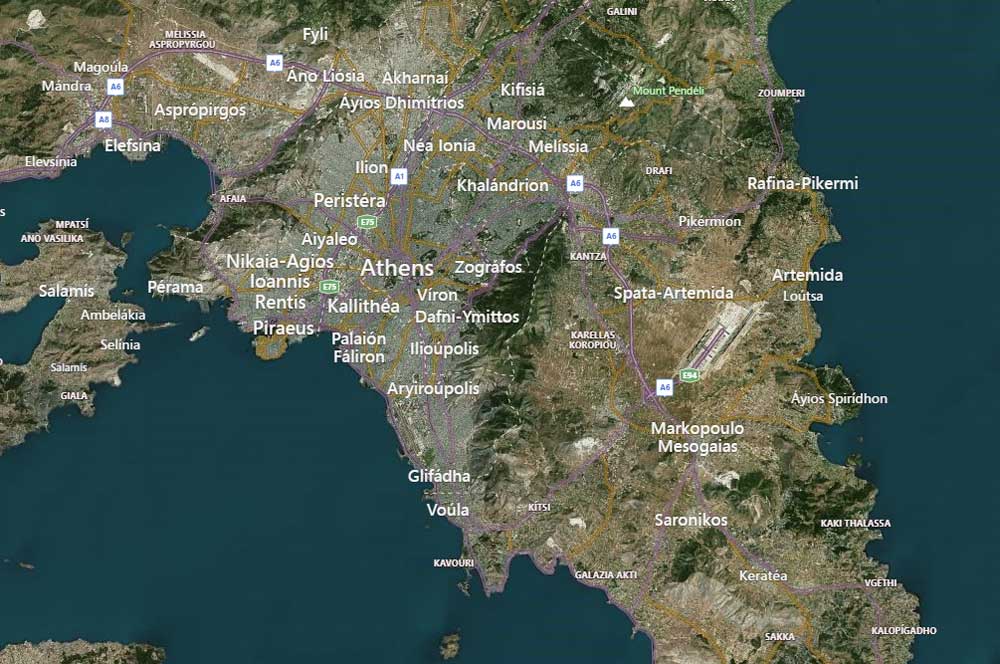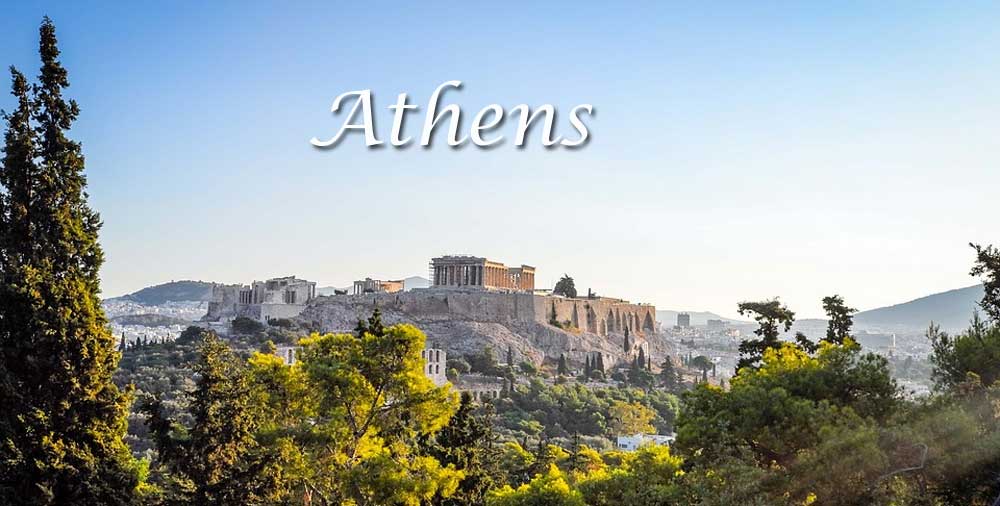Geography of Athens Greece
Athens occupies a wide coastal plain that slopes down towards the Aegean, surrounded by the mountainous reliefs of Parnitha Penteli and mount Hymettus.
Piraeus, Faliro and the coasts of West Attica are wetted by the Saronic gulf. In the middle of Athens basin there are the heights of the Acropolis and the Lycabettus.
Greater Athens, extending from the mountains to the sea, populated by almost 5.000.000 inhabitants (more than a quarter of the population of all of Greece), the hill of the acropolis is a kind of island, exciting and solemn, even today it is not more possible to move freely among the remains of the Parthenon (severely damaged by one of the many earthquakes that hit the city) and visit the acropolis on full moon nights. All around, the largest city in the entire Balkan Peninsula has grown in a chaotic manner
The urban complex of Athens stretches across the Attica Basin, which is surrounded by five mountains: Mount Aigaleo and Mount Poikilo to the west, Parnitha to the northwest, Penteli to the northeast and Ymitto to the east. Parnitha, with a maximum altitude of 1,413 meters, is the highest of the mountains, while a large part of its area has been declared a National Park. The Saronic Gulf borders Athens to the south.
Athens is built around several hills. Lykavittos is one of the highest hills of the main city and offers a view of the entire Basin. The geomorphology of Athens is considered one of the most special in the world, due to its mountains, which cause a temperature inversion phenomenon, which, combined with the difficulties of the Greek governments to control the emission of pollutants, is responsible for the air pollution problems faced by the city. This issue does not appear only in Athens. For example Los Angeles and Mexico City suffer from similar geomorphological inversion problems.
Kifissos, Ilissos and Iridanos are the historical rivers of Athens. The largest part of their bed has been covered by transport projects (Kifissos: National Highway Athens – Lamias, Ilissos: Michalakopoulou – Kallirrois) contributing to the degradation of the natural environment of the Basin.

Main Areas
Mostly German architects designed the most ambitious urban plan of the nineteenth century: the city would develop in the shape of a V around the acropolis; a monumental axis would have united the royal palace to the Parthenon, long straight and majestic avenues would radiate out from the squares Omònia and S`yntagma (“constitution”). The archaeological areas would have been enhanced and harmoniously integrated into the modern city. By 1860 the surface of the city had already quadrupled, the first industries were born, but land speculation had also started.
Immigration
The situation became dramatic after 1922, when hundreds of thousands of exiled Greeks arrived from Asia Minor after the last war fought against Turkey. The public parks disappeared and gigantic suburban neighbourhoods (often little more than slums, lacking public services) occupied any space, continuing to expand throughout the twentieth century.
Industrial Athens
Athens is joined with Piraeus and in the neighbouring municipalities, industries developed in a southwest direction. Many quality modern buildings – the United States embassy, the Museum of Modern Art, some municipal offices – up to the great works created for the 2004 Olympics: not only sports facilities, but a very modern airport, the subway and the renewal of the city road network and of various central and peripheral districts.
Trade
Athens attracts, investors mostly in construction and the per capita income of its inhabitants is much higher than the average for the rest of the country. The huge merchant traffic of Piraeus – which is also the main port for connections with the dozens of Greek Aegean islands – directs activities on trade, limiting industrial development. Athens is however the most important industrial center of Greece, as well as a tourist destination of world importance, both for the monuments of the acropolis and for the National Archaeological Museum.
